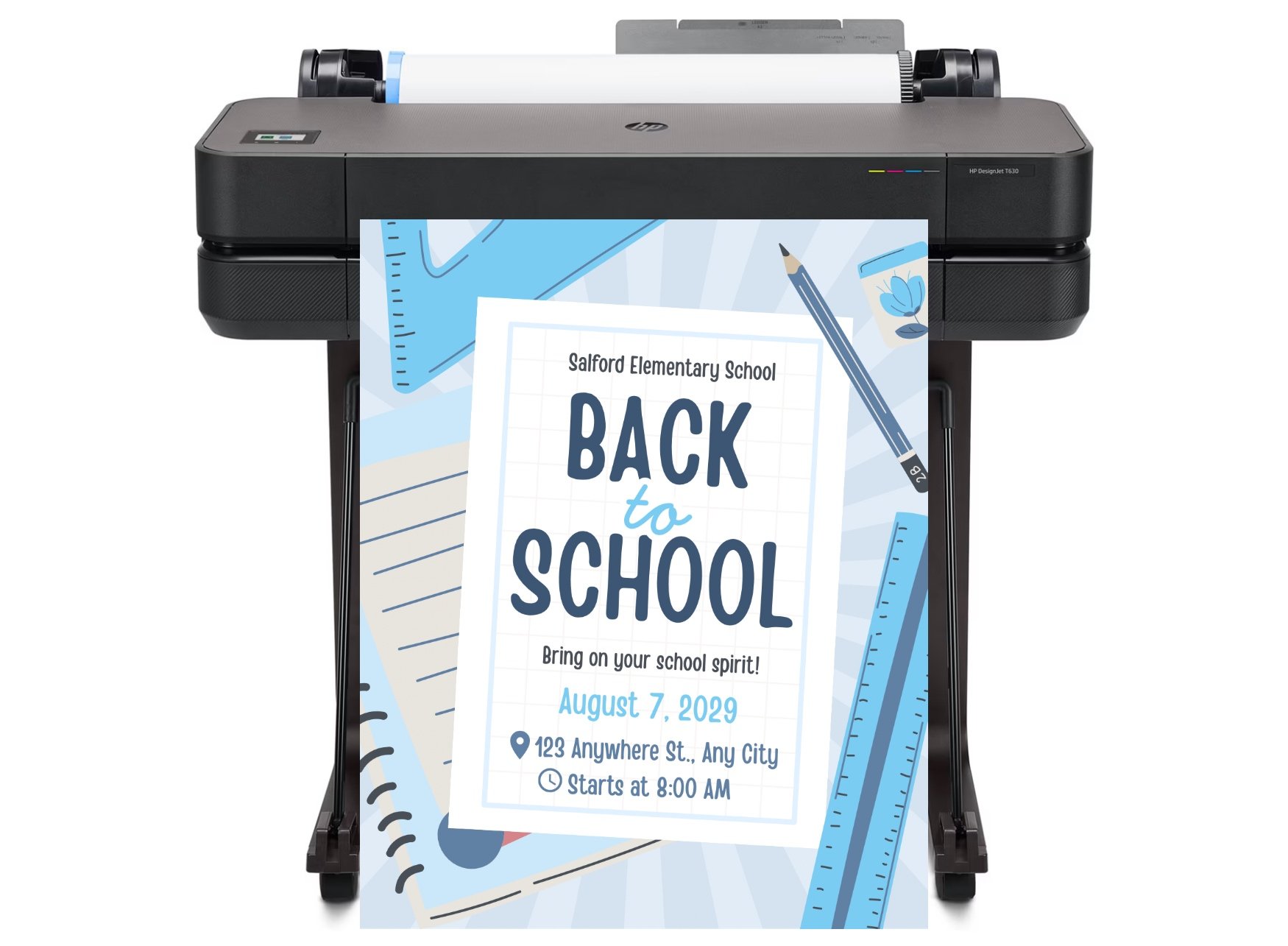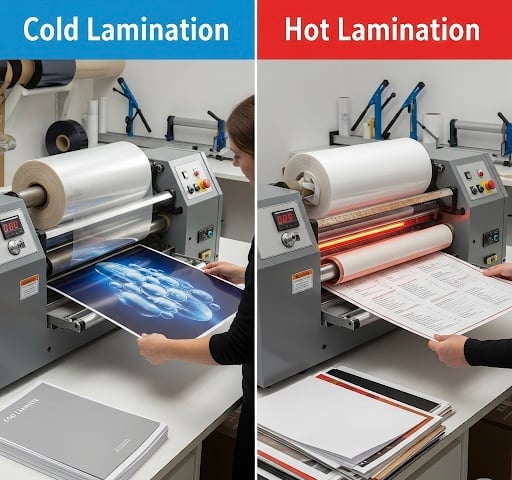
DISCOUNTED EDUCATION PRICING! CALL 1-877-891-8411. We Gladly Accept School Purchase Orders!

Lamination protects documents, photos, and materials from damage, extending their lifespan with a professional finish. But when deciding between cold lamination and hot lamination, which is best for your needs? This in-depth guide compares both methods, highlighting their benefits, drawbacks, and ideal use cases. Packed with expert insights, practical tips, and answers to common questions, this article will help you choose the right lamination method for any project. Whether you’re preserving family photos, creating durable signage, or preparing business materials, we’ve got you covered.
Lamination encases a document or material in a protective plastic film to shield it from water, dust, UV rays, and physical wear. The process enhances durability, prevents fading, and adds a polished look. There are two main types: hot lamination, which uses heat to activate adhesive, and cold lamination, which relies on pressure-sensitive adhesive. Your choice depends on the material, budget, and intended use.
Snippet: Lamination seals materials in plastic film to protect against damage, with hot lamination using heat and cold lamination using pressure-sensitive adhesive.
Hot lamination involves a laminator that heats plastic film to melt its adhesive, bonding it to the material. Common in offices, schools, and print shops, this method is used for items like ID cards, menus, posters, and certificates.
Snippet: Hot lamination uses heat to bond plastic film, offering a durable, glossy finish but is not suitable for heat-sensitive materials like thermal paper.
Cold lamination uses pressure-sensitive adhesive to apply plastic film without heat. The laminator presses the film onto the material, making it ideal for delicate or heat-sensitive items like vintage photos, vinyl, or thermal receipts.
Snippet: Cold lamination uses pressure-sensitive adhesive, making it safe for heat-sensitive materials like photos or vinyl, with no warm-up time needed.
| Feature | Hot Lamination | Cold Lamination |
|---|---|---|
| Method | Heat-activated adhesive | Pressure-sensitive adhesive |
| Best For | Durable, long-term projects | Heat-sensitive or delicate materials |
| Durability | High, resistant to moisture | Moderate, less resistant in humidity |
| Cost | More affordable for bulk | More expensive films |
| Speed | Slower (requires warm-up) | Faster (no warm-up needed) |
| Material Compatibility | Not for heat-sensitive items | Safe for most materials |
| Finish | Glossy or matte, professional | Slightly less polished |
Snippet: Hot lamination is cost-effective and durable but unsuitable for heat-sensitive materials, while cold lamination is versatile but pricier.
Hot lamination is ideal for:
Example: A restaurant laminating menus for daily use benefits from hot lamination’s durability and glossy finish.
Cold lamination is best for:
Example: A museum preserving delicate archival photos would choose cold lamination to avoid heat damage.
Snippet: Use hot lamination for durable business materials or bulk projects; choose cold lamination for photos, vinyl, or urgent tasks.
Hot lamination typically offers greater durability due to its heat-activated adhesive, which forms a stronger bond resistant to moisture and wear. Cold lamination is less durable in high-humidity environments but still effective for many applications.
Snippet: Hot lamination is more durable than cold lamination, especially in humid conditions, due to its heat-activated adhesive.
Yes, but cold lamination is less resistant to moisture and UV exposure compared to hot lamination. For outdoor signs, hot lamination or UV-resistant cold lamination films are better choices.
Snippet: Cold lamination can be used for outdoor signs, but hot lamination or UV-resistant films offer better weather resistance.
Cold lamination films are generally more expensive due to their pressure-sensitive adhesive. However, cold laminators may be cheaper than hot laminators for small-scale use.
Snippet: Cold lamination films cost more than hot lamination films, but cold laminators can be more affordable for small projects.
Some photos can be hot laminated, but heat-sensitive photos (e.g., inkjet prints or old Polaroids) may be damaged. Cold lamination is safer for most photos.
Snippet: Cold lamination is safer for photos, especially heat-sensitive ones, while hot lamination may cause damage.
To avoid bubbles, ensure the surface is clean, align the film carefully, and apply even pressure with a roller or laminator. Work slowly to prevent air entrapment.
Snippet: Prevent bubbles in cold lamination by cleaning the surface, aligning the film, and applying even pressure.
Snippet: Choose cold lamination for heat-sensitive or small projects; opt for hot lamination for durable, high-volume tasks.
Both methods have environmental impacts. Hot lamination uses energy to heat the machine, while cold lamination relies on adhesive chemicals that may be harder to recycle. Some manufacturers offer eco-friendly films for both methods, so look for biodegradable or recyclable options if sustainability is a priority.
Snippet: Hot lamination uses more energy, while cold lamination films may be less recyclable; choose eco-friendly films for sustainability.
Choosing between cold lamination and hot lamination depends on your project’s needs. Hot lamination excels for durable, professional-grade materials like menus or ID cards, especially in bulk. Cold lamination is the go-to for heat-sensitive items like photos or vinyl, offering flexibility and speed for smaller tasks. By considering your material, budget, and intended use, you can select the method that delivers the best results.
For more guidance or to explore lamination equipment, check trusted suppliers or consult with a professional to ensure your project shines. Have a specific lamination question? Let us know in the comments, and we’ll help you find the perfect solution!
Snippet: Hot lamination is best for durable, bulk projects; cold lamination suits heat-sensitive materials and quick tasks.